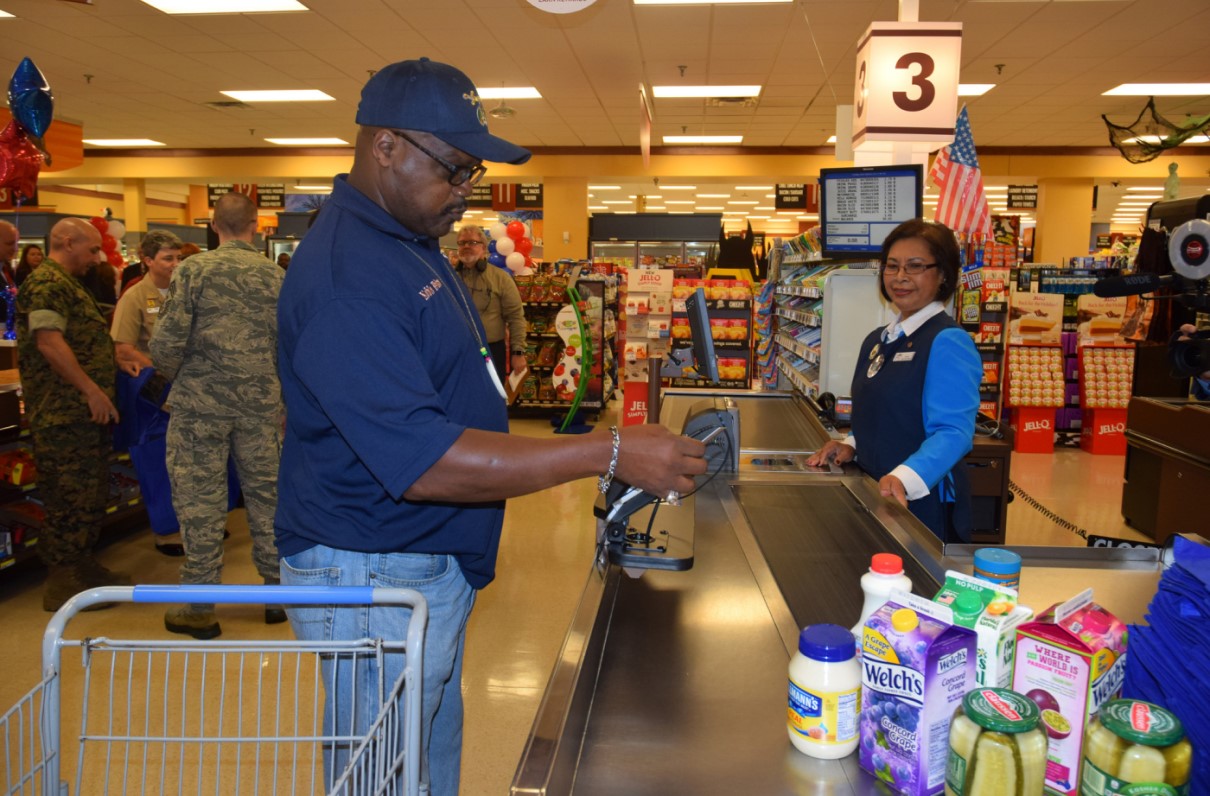This article by Karen Jowers originally appeared on Military Times, the nation's largest independent newsroom dedicated to covering the military and veteran community.
Commissary customers’ savings continued their upward trend in fiscal 2019, with average worldwide savings of 25.6 percent compared to civilian grocery stores, according to a report from the Defense Commissary Agency.
Overall, those savings are up from the 23.9 percent savings for fiscal 2018. But savings measured in overseas stores declined to 42.2 percent, from the 44 percent savings level in 2018. Officials attribute that drop overseas to the lower cost of living allowance in fiscal 2019.
The commissary agency has been required to track customer savings since fiscal 2016, in order to help defense officials and Congress monitor the commissary benefit.
[RELATED: MOAA Remains Cautiously Optimistic on Commissary-Exchange Merger]
Savings are calculated for overall U.S. stores, and for overseas, but they’re also broken out by region.
The overall savings level for U.S. stores (to include Alaska and Hawaii) was 22.3 percent for fiscal 2019, up from the 20.2 percent level in 2018.
The commissary agency compares prices with up to three commercial grocers, including one supercenter, in the local area of each commissary in the U.S. The comparison looks at 38,000 items at a regional level and local prices on about 1,000 products that are representative of a shopper’s typical market basket, officials say.
For years, the commissary savings was touted as an overall 30 percent. In 2016, as mandated by law, the commissary agency established a baseline of savings using a more thorough methodology.
[RELATED: How to Recession-Proof Your Finances]
A breakdown of the savings percentages:
| FY 16 (Base) |
FY 17 | FY 18 | FY 19 | |
|---|---|---|---|---|
| Total U.S. (includes Alaska, Hawaii) |
20.2% | 19.9% | 20.2% | 22.3% |
| Overseas | 44.2% | 42.7% | 44.0% | 42.2% |
| Global | 23.7% | 23.3% | 23.9% | 25.6% |
Congress requires the commissary agency to maintain savings levels that are reasonably consistent with the 2016 baseline, since the agency can now use variable pricing—lowering or raising prices on items, rather than selling them at cost, as they did for decades previously. Commissary officials have had the authority to do this for several years, as a means of being competitive with local stores, and to allow commissaries to use some of the profit made to reduce the amount of taxpayer dollars — over $1 billion a year — that’s used to operate the stores. Those taxpayer dollars have been a target of a number of people in DoD in efforts to save money.
One retiree contacted Military Times to say he’s been shopping at commissaries for more than 50 years, “and from what I can see, prices are noticeably going up!”
The savings depends on the item, as well as the region.
For example, there are more than 900 items in the commissary’s Your Everyday Savings, or YES!, program, which lowers prices year-round on items that commissary customers purchase the most. That has contributed to the increase in savings, said Robert Bianchi, a retired Navy rear admiral who is DoD special assistant for commissary operations, in the agency’s report on the savings numbers.
Bianchi said the grocery department — for example, packaged foods — is the main driver of savings for commissaries in three U.S. regions, South Atlantic, North Central and Hawaii and Alaska. The fresh department —such as meat and produce — is the main source of savings for the commissaries in New England, South Central, Mountain and Pacific.
Savings percentages by U.S. region:
- New England (36 Stores): 21.8%
- South Atlantic (30 Stores): 20.4%
- North Central (18 Stores): 22%
- South Central (33 Stores): 20.7%
- Mountain (20 Stores): 20.8%
- Pacific (31 stores): 24.3%
- Alaska and Hawaii (9 stores): 35.1%
Other articles by Military Times:
Here’s why some bases aren’t allowing spouses to accompany their newly eligible veteran to shop
Army combat engineer dies in Syria vehicle rollover accident
Dude, where’s my Little Bird? Army closes ‘stolen helicopter’ investigation


